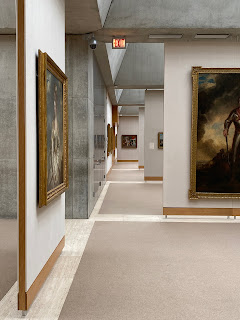You ignore the sign that says private driveway. The narrow sandy road winds through the pine trees. The road seems longer when you know you’re trespassing. You see large houses set in the dark forests. You choose to come...

You ignore the sign that says private driveway. The narrow sandy road winds through the pine trees. The road seems longer when you know you’re trespassing. You see large houses set in the dark forests. You choose to come at night thinking it’d be easier to hide in the cloak of darkness. But in reality, the car lights make you more conspicuous at dusk. The trees start to thin out and you can see the evening clouds. On the left, a turn off for a car. You continue driving all the way to the end. You find the driveway is blocked by 2 wood rails forming an X. You park the car and step over the fence. It’s a slight slope down to a garage. The motion detectors trigger the lights and you just pray there are no security cameras.
At the end of the garage, a set of stairs emerge. You ascend and notice the stairs gradually get steeper towards the top till you reach the southeast corner of the building. There’s a strip of cobblestones at the semi exposed foundation wall. Another short flight of stairs to the left leads to an elevated entry perch on the left corner of the building. From this vantage point, a miraculous uninterrupted view of the bay opens up. Bayberry shrubs flow down to the beach and horizon.
Walking around the house you see a large deck. To the north, a really garish house. You recognize this blight on the landscape as the house that’s been covered in the newspapers. In fact, the way you found Hopper’s studio address was a news article concerning lawsuits filed against the neighbor. 15 years ago, a couple bought the Hopper property and built a 9000 sf monstrosity next door. It was so large it destroyed the view and landscape. All the surrounding neighbors wanted it demolished for violating various zoning statutes. For 6 years the house sat vacant pending lawsuits. The spouse died, the widow sold it to the current owners who promptly paid the town off $3 million to use the house plus an additional $500,000 to clear the legal fines.
There is no vegetation to hide behind. You are completely exposed on a hill. You notice the neighbor’s light is glowing bright and a car is parked in their driveway. You start thinking they are looking at you wondering what you’re doing on their property. Under the threat of surveillance you take pictures as fast as you can. A panoramic video to preserve the glimpse. You start making your way towards the entrance and walk briskly down the stair. You’re now on borrowed time.
You start to think if the neighbors call the police, how long would it take for the cops to drive down the roads and show up? With a single lane driveway, an incoming cop car would block your exit. You make a K turn on the dirt path. Your car is so long it overhangs the road and backs into bushes to turn out. On your drive out, you start mentally preparing a litany of ignorant excuses… “Sorry we didn’t know this was a private road... We got lost, we’re trying to find the beach…. Is this the way to Provincetown?” Nothing happens. Escaping without incident, you replay the scene in your mind.
You start thinking although Hopper’s house appeared to be a Cape
Cod style house in volume it was very well designed. The house was kinked slightly
non-parallel from the shore to create a dynamic tension between house and
landscape. By running the stair diagonally to the side of the house for entry, you think
Hopper is a genius for incorporating the sweeping views of the bay as part of the entry
sequence. It’s a simple house that makes total logical sense. A double
height painting studio that occupies over half the house's volume with large windows
facing north, an entry through the kitchen on the southeast which receives
morning light, a bedroom facing sunset on the south west and sculptural chimney
at the center to tie all the elements together.
At home, you start reading random articles about the house to understand that
which was not to be seen. You read about an artist who painted in Hopper’s
cottage for 15 summers. He had befriended the owners that had bought one of his
paintings in a local gallery. The most exciting thing the artist provides are photos
of the inside of the house.
The wood flooring is striped in an alternating gray aged wood and dark stained pattern. Moldings on the doors are classical. Expansive views out of windows bring light to the entire house. A simple sculptural chimney forms the center and hearth of the house. The artist mentions in his writing the existence of an architectural model of Hopper’s house exhibited in Salisbury University, Maryland. He describes the model as painstakingly made. You find out the exhibition occurred sometime in 1993. Dejected, you think morbid thoughts like all the curators who put the show together are probably dead and you’ll never see the model. You start emailing random Hopper biographers who mention the model, but they don’t have the common courtesy to write you back. You enter stalker mode and start cold calling museums to see whether they have this model in their collection or not. One museum you call says they indeed have it in their collection and sends you some photos of it. Eureka you’ve struck gold.
The model is a valuable artifact. It’s like a fingerprint and a window into a designer’s soul. The model is a fossil record from the design process that reveals how the designer’s brain made decisions. Hopper’s model is no different. There are architects who paint like Corbusier, Steven Holl, and Zaha. But this is the first time you look at a painter who architected. Hopper’s model is made of painted cardboard. His loose pencil marks and notations are scribbled to indicate positions and appearances of doors. There are no cut outs for the windows in the walls of the model. Instead, all the windows are painted on the outside with a light blue color. On the interior, the attic floor, chimney, stair, furniture, painting supplies, and walls are detachable… allowing Hopper to insert interior elements into the house. The craftsmanship is crude. You imagine the 6’-6” tall Hopper hunched over a small model, cutting gluing and taping all these pieces of cardboard together. What’s as informative about the model is what is left out. Hopper didn’t model the site, the garage or the exterior stairs. These geometries and views which impressed you the most are not even documented. What’s important to Hopper is the placement of doors and walls. The sculptural chimney. For an artist who spent hours and hours meditating on buildings and painting them… when it came to designing his own house, these are the elements that he focused on in particular. Hopper’s design process regarding architecture is like his painting: hands-on, iterative, and tactile.
Looking at the model, you start making connections between the model, photos of the house and his famous painting, Rooms by the Sea displayed in the Yale Art Gallery. Initially titled “Alias the Jumping Off Place", Edward Hopper's Rooms by the Sea was Hopper’s painted vision of his understanding of the world. Critic Clement Greenberg stated, "Hopper happens to be a bad painter. But if he were better, he would, most likely, not be so superior an artist".
 |
| Rooms by the Sea 1951 |
 |
| Sketch for the Painting |
 |
| View of Room Painted |
 |
| Model of the Room during design |
When the Hoppers arrived, Truro was completely denuded of trees. The land was a barren wasteland. For 12,000 years the Wamponoag Indians roamed the same Truro area in loincloth year round… living off fish and shellfish in old growth forests. Within 200 years of their arrival the settlers cut all the trees down for firewood and building materials leaving the hills to look like camel humps. Into this scene you can imagine Hopper, the tall solitary figure walking in desolation quite alienated like a figure in one of his paintings. Something in this wasteland touched his soul and inspired him to paint. “Maybe I am not very human - all I ever wanted to do was to paint sunlight on the side of a house.”

















.jpg)
.jpg)










![Apple Aims to Surpass Qualcomm with In-House Modem by 2027, Debuting in iPhone SE Next Year [Report]](https://www.iclarified.com/images/news/95752/95752/95752-1280.jpg)






